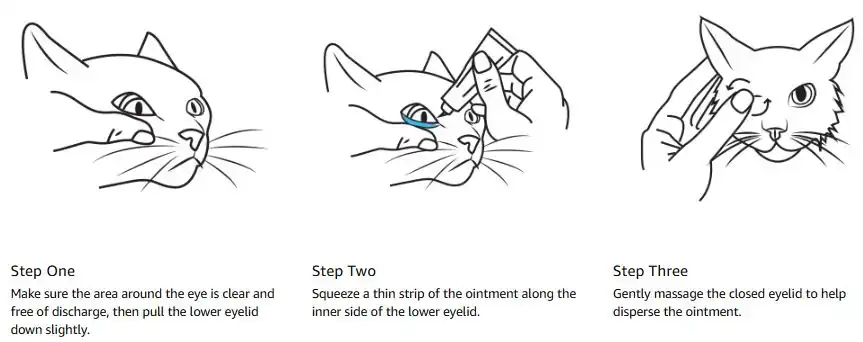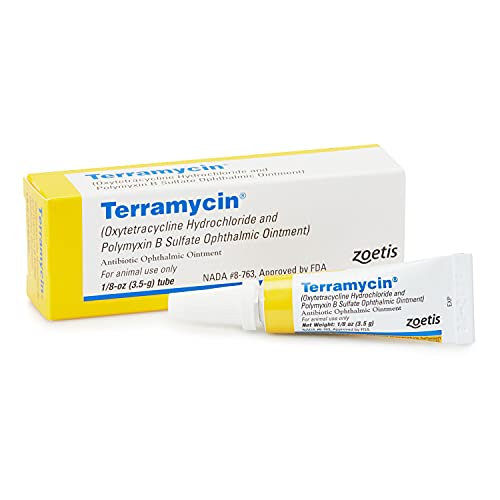Owning a cat comes with the responsibility of ensuring their well-being, and that includes taking care of their precious eyes. Cat eye problems can be a common concern for cat owners, and understanding how to address these issues is crucial for your feline companion’s health. In this article, we will explore various cat eye problems and the effective treatments available to keep your cat’s vision clear and their eyes comfortable.
Cat Conjunctivitis: The Red and Watery Eyes

Common Cat Eye Problems
Conjunctivitis, often referred to as “pink eye,” is a common eye condition in cats. It is characterized by redness and inflammation of the conjunctiva, the thin, transparent membrane that covers the white part of the eye (sclera) and lines the inner surface of the eyelids. This condition can be uncomfortable for your feline friend and may cause excessive tearing, discharge, and irritation. In this section, we will delve into the details of conjunctivitis, including how to identify it, its causes, and the available treatment options.
Identifying Cat Conjunctivitis
- Redness and Irritation: One of the most apparent signs of conjunctivitis is redness in one or both of your cat’s eyes. The affected eye may appear bloodshot and may be accompanied by visible blood vessels.
- Excessive Tearing: Conjunctivitis often leads to increased tear production, causing your cat’s eyes to water excessively. This can lead to wet fur around the eyes.
- Discharge: Your cat may have a discharge from their affected eye(s). This discharge can range from clear and watery to thick and pus-like, depending on the underlying cause of the conjunctivitis.
- Squinting and Blinking: Cats with conjunctivitis may squint or blink more frequently than usual due to the discomfort and irritation they experience.
- Rubbing the Eyes: Your cat may rub their eyes with their paws or against objects to alleviate the discomfort caused by conjunctivitis. However, this can worsen the condition.
- Swelling: In some cases, you may notice swelling of the eyelids, particularly if the conjunctivitis is severe or has been present for a while.
Causes of Cat Conjunctivitis

Understanding the underlying causes of conjunctivitis is essential for effective treatment. For general eye health maintenance, VAZULI Pet Eye Health Ointment is a great choice. These products can be found on Amazon and can play a significant role in keeping your cat’s eyes healthy.
3 Simple Steps to Safely Use Terramycin on Your Cat

Conjunctivitis in cats can result from various factors, including:
- Bacterial Infections: Bacterial conjunctivitis is often associated with a yellow or greenish discharge from the eye. Different types of bacteria can cause this condition, and your vet may prescribe antibiotics to treat it.
- Viral Infections: Viral conjunctivitis, commonly associated with upper respiratory infections, can lead to red and watery eyes. It may resolve on its own, but supportive care is crucial.
- Allergies: Cats can develop allergic reactions to environmental factors like pollen, dust, or certain foods, leading to allergic conjunctivitis. Identifying and eliminating the allergen is key to managing this type of conjunctivitis.
- Foreign Bodies: Particles such as dust, grass, or debris can irritate the eye’s surface, causing conjunctivitis. Flushing the eye and removing the foreign body may be necessary.
- Trauma: Physical injury to the eye can result in conjunctivitis. It’s vital to address any eye injuries promptly to prevent complications.
- Underlying Health Conditions: Sometimes, conjunctivitis can be a secondary symptom of an underlying health issue, such as feline herpesvirus or chlamydia. Treating the root cause is essential in such cases.
Cat Conjunctivitis Treatment Options

The treatment of conjunctivitis in cats depends on its underlying cause. For treating infections and promoting healing, consider Terramycin Antibiotic Ointment, an effective solution for eye infections in cats.
Here are some common treatment options:
- Antibiotics: Bacterial conjunctivitis typically responds well to antibiotic eye drops or ointments prescribed by a veterinarian. It’s essential to complete the full course of antibiotics, even if the symptoms improve.
- Antiviral Medications: Viral conjunctivitis may require antiviral medications to manage the underlying viral infection. Supportive care, such as keeping the eyes clean and comfortable, is also crucial.
- Allergy Management: Allergic conjunctivitis often improves when the allergen is identified and removed from the cat’s environment. In some cases, antihistamines or steroids may be prescribed by a vet.
- Warm Compresses: Applying a warm, damp cloth to your cat’s closed eyes can help soothe irritation and remove discharge.
- Eye Flushing: If a foreign body is suspected, the vet may flush the eye to remove the irritant.
- Surgery: In rare cases, severe conjunctivitis may require surgical intervention, such as eyelid repair or removal of an obstructive mass.
It’s essential to consult with a veterinarian if you suspect your cat has conjunctivitis. They can accurately diagnose the cause of the condition and recommend the most appropriate treatment, ensuring your feline companion’s eyes regain their clarity and comfort.
Cat Corneal Ulcers: Protecting the Window to the Soul
The cornea, the transparent front surface of the eye, is often likened to the “window to the soul.” It plays a crucial role in maintaining your cat’s vision. Corneal ulcers, although relatively uncommon, can be a serious threat to your feline friend’s eye health. In this section, we’ll explore corneal ulcers in detail, including how to recognize them, their potential causes, and the various treatment options available.
Recognizing Cat Corneal Ulcers
Corneal ulcers are open sores or injuries that occur on the cornea’s surface. Identifying a corneal ulcer in your cat’s eye may require careful observation and a visit to the veterinarian. Here are some common signs to look for:
- Eye Redness: A red or bloodshot appearance in the affected eye is a frequent indicator of a corneal ulcer.
- Squinting and Blinking: Cats with corneal ulcers often squint or blink excessively due to the discomfort and pain associated with the condition.
- Excessive Tearing: The eye may produce more tears than usual in an attempt to alleviate the irritation caused by the ulcer.
- Cloudiness: You might notice a cloudy or hazy appearance on the surface of the eye, which can indicate the presence of an ulcer.
- Sensitivity to Light: Cats with corneal ulcers are often sensitive to bright light (photophobia) and may avoid well-lit areas.
- Pawing at the Eye: Your cat may paw at or rub the affected eye in an attempt to relieve the discomfort. However, this can worsen the condition.
Causes of Corneal Ulcers
Understanding the potential causes of corneal ulcers is essential for both prevention and treatment. Corneal ulcers in cats can result from various factors, including:
- Trauma: Physical injuries, such as scratches from sharp objects or contact with foreign bodies like plants, dust, or debris, can damage the cornea and lead to ulcers.
- Infections: Bacterial, viral, or fungal infections of the cornea can cause ulcers. These infections can sometimes be secondary to other eye conditions or injuries.
- Dry Eye (Keratoconjunctivitis Sicca): Insufficient tear production can result in a dry and irritated cornea, making it more susceptible to ulcers.
- Eyelid Abnormalities: Abnormal eyelid positioning or conditions like entropion (inward rolling of the eyelid) can cause the cornea to become damaged over time.
- Foreign Bodies: Particles lodged under the eyelid or on the cornea’s surface can lead to ulceration.
- Hereditary Factors: Some breeds are more predisposed to corneal ulcers due to genetic factors.
Treating Cat Corneal Ulcers
Treating corneal ulcers in cats should be a priority to prevent complications and preserve their vision. Treatment options may include:
- Medication: Your veterinarian may prescribe antibiotic or antifungal eye drops or ointments to treat or prevent infection.
- Pain Management: Pain relief medications may be necessary to keep your cat comfortable during the healing process.
- Tear Substitutes: Artificial tear drops or ointments can help lubricate the eye, promoting healing and preventing further damage.
- Confinement: Keeping your cat in a quiet, dimly lit room can reduce eye strain and promote healing.
- Surgery: In severe cases or if the ulcer doesn’t respond to medication, surgical intervention may be required, such as corneal grafts or debridement.
- Management of Underlying Causes: Addressing any underlying conditions, such as entropion or dry eye, is essential to prevent future ulcers.
- Regular Follow-up: Follow-up appointments with your veterinarian are crucial to monitor the ulcer’s progress and adjust treatment as needed.
Remember that early diagnosis and treatment are critical when it comes to corneal ulcers. If you suspect your cat has a corneal ulcer or if you notice any signs of eye discomfort, consult with your veterinarian promptly. By doing so, you can help protect the “window to the soul” and ensure your cat’s continued visual clarity and comfort.
Glaucoma in Cats: Understanding the Silent Thief of Sight
Glaucoma, often referred to as the “silent thief of sight,” is a serious eye condition that can lead to irreversible vision loss in cats. Cat owners must be aware of this condition, its detection methods, causes, and management to safeguard their feline companion’s eye health.
Detecting Cat Glaucoma
Detecting glaucoma in cats can be challenging because it typically progresses slowly and often without noticeable symptoms until it reaches an advanced stage. However, some signs that may indicate glaucoma include:
- Cloudy or Hazy Eyes: An affected eye may appear cloudy or hazy due to increased pressure within the eye.
- Dilated Pupil: Glaucoma can cause the affected pupil to become dilated (enlarged), even in well-lit environments.
- Redness and Bloodshot Appearance: The affected eye may become red and bloodshot due to increased blood flow.
- Pain and Discomfort: Cats with glaucoma may display signs of eye pain, such as excessive blinking, squinting, or rubbing the eye.
- Bulging Eye: In severe cases, the eye may appear enlarged or bulging due to increased intraocular pressure.
- Decreased Vision: Cats with advanced glaucoma may experience a noticeable decline in their vision or complete blindness in the affected eye.
Because glaucoma often presents with subtle or late-stage symptoms, regular eye examinations by a veterinarian are essential for early detection.
Causes of Glaucoma
Understanding the underlying causes of glaucoma is crucial in managing the condition effectively. Glaucoma occurs when there is an imbalance between the production and drainage of aqueous humor, the fluid that maintains intraocular pressure. Common causes include:
- Primary Glaucoma: This type of glaucoma has a genetic predisposition and is more common in certain breeds. It can affect one or both eyes and typically develops as cats age.
- Secondary Glaucoma: Secondary glaucoma is usually the result of another eye condition or trauma. Conditions like uveitis (inflammation of the eye), lens luxation (displacement of the eye’s lens), or tumors can lead to increased intraocular pressure.
- Narrowed Angle: In some cases, the angle between the iris and cornea is narrower than normal, obstructing the normal drainage of aqueous humor and causing glaucoma.
Managing Glaucoma
While glaucoma is not curable, it can be managed to slow its progression and alleviate pain and discomfort. Treatment options for managing glaucoma in cats include:
- Medications: Prescription eye drops or oral medications can help reduce intraocular pressure. These medications often need to be administered for the rest of the cat’s life.
- Surgery: In some cases, surgical procedures may be necessary to improve drainage or remove the affected eye if it is causing severe pain and complications.
- Laser Therapy: Laser therapy can be used to open the drainage angle in cases of narrow-angle glaucoma.
- Pain Management: Pain relief medications are essential to keep your cat comfortable if they are experiencing discomfort from glaucoma.
- Regular Monitoring: Cats with glaucoma require regular check-ups with their veterinarian to assess the progression of the condition and adjust treatment as needed.
- Complementary Therapies: Some owners explore complementary therapies, such as acupuncture or herbal remedies, in conjunction with traditional treatments. Always consult with a veterinarian before trying such therapies.
It’s important to remember that early diagnosis and prompt treatment are vital in managing glaucoma effectively and preserving your cat’s remaining vision. Regular veterinary check-ups, especially for older cats and those with a genetic predisposition to glaucoma, are essential for early detection and intervention. By being vigilant and proactive, you can help protect your cat from the silent thief of sight.
Cat Watery Eyes: When Tears Become a Concern

Watery eyes, also known as epiphora, can be a common issue in cats. While some degree of tearing is normal, excessive tearing can indicate an underlying problem that requires attention. In this section, we will explore watery eyes in cats, including the reasons for excessive tearing and potential remedies.
Reasons for Excessive Tearing
Excessive tearing in cats can occur for various reasons, and identifying the underlying cause is essential for effective treatment. Some common reasons for watery eyes include:
- Eye Irritation: Foreign bodies, such as dust, debris, or hair, can irritate the eye’s surface, leading to increased tearing as a protective mechanism.
- Allergies: Cats, like humans, can be allergic to various environmental factors, such as pollen, dust, or certain foods. Allergic reactions can manifest as watery eyes.
- Conjunctivitis: Inflammation of the conjunctiva, the thin membrane covering the eye’s white part and inner eyelids, can cause tearing. Conjunctivitis can be due to infections, allergies, or irritants.
- Blocked Tear Ducts: Blocked tear ducts can prevent tears from draining properly, leading to overflow and watery eyes.
- Corneal Ulcers: Corneal ulcers can cause excessive tearing, along with other symptoms like squinting and eye redness.
- Dental Issues: Dental problems, such as tooth root abscesses, can sometimes lead to watery eyes due to referred pain.
- Eyelid Abnormalities: Eyelid abnormalities like entropion (inward rolling of the eyelid) or eyelashes rubbing against the eye can cause irritation and tearing.
- Underlying Health Conditions: Systemic health issues, such as respiratory infections or upper respiratory conditions, can lead to watery eyes as a secondary symptom.
Remedies for Watery Eyes
The treatment of watery eyes in cats depends on the underlying cause. Here are some potential remedies and interventions:
- Eye Examination: If your cat is experiencing excessive tearing, consult with a veterinarian for a thorough eye examination to determine the cause.
- Cleaning: Gently clean around your cat’s eyes with a damp, soft cloth to remove any discharge or debris. Be careful not to touch the eye directly.
- Allergen Management: If allergies are suspected, try to identify and eliminate allergens from your cat’s environment. This might include changing bedding, using air purifiers, or altering their diet under veterinary guidance.
- Medications: Depending on the diagnosis, your vet may prescribe eye drops, ointments, or oral medications to treat infections, reduce inflammation, or manage underlying conditions.
- Surgery: In cases where eyelid abnormalities are the cause of tearing, surgical correction may be necessary to alleviate the issue.
- Tear Duct Flushing: If blocked tear ducts are the problem, your veterinarian may recommend flushing the ducts to remove obstructions.
- Dental Care: Addressing dental issues can sometimes resolve watery eyes associated with referred pain. Regular dental check-ups are essential.
- Complementary Therapies: Some cat owners explore complementary therapies, such as warm compresses or herbal remedies, to soothe eye irritation. Always consult with your vet before trying such remedies.
Remember that watery eyes can be a sign of an underlying medical condition, and self-diagnosis or treatment without professional guidance is not recommended. If your cat’s tearing persists or worsens, or if you notice any other concerning symptoms, consult with your veterinarian promptly. By addressing the underlying cause, you can help alleviate your cat’s discomfort and maintain their eye health.
Cat Eye Infections: Battling Bacterial and Viral Intruders
Eye infections in cats can be uncomfortable and, if left untreated, potentially lead to more severe complications. Understanding the symptoms of eye infections and the appropriate medications for treating them is essential for maintaining your cat’s eye health.
Symptoms of Cat Eye Infections
Eye infections in cats can manifest with a variety of symptoms, which may vary in severity. Some common signs of eye infections include:
- Redness: The affected eye may appear red or bloodshot due to inflammation.
- Tearing: Excessive tearing or watery discharge from the eye is a common sign of infection.
- Discharge: The discharge from the infected eye can range from clear and watery to thick and pus-like, depending on the type and severity of the infection.
- Squinting: Cats with eye infections often squint or blink more frequently than usual due to discomfort.
- Rubbing the Eye: Your cat may paw at or rub the infected eye in an attempt to alleviate the discomfort. However, this can worsen the condition.
- Sensitivity to Light: Photophobia, or sensitivity to bright light, may cause your cat to avoid well-lit areas.
- Swelling: In some cases, there may be swelling of the eyelids or surrounding tissues.
- Cloudiness: The affected eye may appear cloudy or hazy, especially in cases of severe infection.
Medications for Eye Infections
The choice of medications for treating eye infections in cats depends on the type of infection and its severity. It’s essential to consult with a veterinarian for a proper diagnosis and treatment plan. Here are some common medications used for treating eye infections:
- Antibiotic Eye Drops or Ointments: Antibiotics are commonly prescribed for bacterial eye infections. These medications help to kill the bacteria causing the infection. They are typically administered directly into the eye.
- Antiviral Medications: Viral eye infections, such as those caused by feline herpesvirus, may require antiviral medications. These medications can help manage viral infections and reduce symptoms. Some antiviral medications can be administered orally.
- Antifungal Medications: In cases of fungal eye infections, antifungal medications may be prescribed. These medications are designed to combat fungal growth within the eye.
- Anti-inflammatory Medications: Eye infections often come with inflammation. Anti-inflammatory medications may be prescribed to reduce redness, swelling, and discomfort. These can be in the form of eye drops or systemic medications.
- Pain Relief Medications: If your cat is experiencing pain or discomfort, pain relief medications may be recommended. These can help keep your cat more comfortable during the healing process.
- Warm Compresses: In addition to medications, warm compresses can be applied to the affected eye to help soothe discomfort and reduce discharge. Use a clean, damp cloth and apply it gently to the closed eye.
- Cleansing Solutions: Your vet may recommend using a sterile saline solution to clean the infected eye and remove discharge. Always follow your vet’s instructions for proper cleaning.
- Complementary Therapies: Some cat owners explore complementary therapies like herbal remedies or homeopathic treatments in conjunction with conventional medications. Ensure that your veterinarian is aware of any complementary therapies you plan to use.
Regular veterinary check-ups are essential to monitor your cat’s eye health and catch any potential infections early. By promptly addressing eye infections with appropriate medications and care, you can help your feline companion recover and maintain clear, healthy eyes.
For the Complete Cat Eye Care Guide, you must read all the below-related articles.
| How to Treat and Manage Common Cat Eye Conditions | Why Is Cat Eye Health Important? Nutrition & Supplements |
| How to Treat Cat Watery Eyes & Excessive Tearing | Common Cat Eye Infections and Their Treatment |
Conclusion
A cat’s eyes are a window to its soul and reflect its overall well-being. By understanding common cat eye problems and taking preventive measures, you can ensure that your feline companion enjoys a life with bright, clear, and healthy eyes.
Remember the importance of regular vet check-ups, maintaining a clean environment, and practicing proactive eye care. If you notice signs of eye trouble, such as excessive tearing or changes in eye appearance, seek prompt veterinary attention. Early intervention can prevent minor issues from becoming major concerns.
As a caring cat owner, you play a vital role in safeguarding your pet’s vision. By being attentive and proactive, you help ensure that your cat’s beautiful eyes continue to captivate and enchant for years to come.
Disclosure: This content is reader-supported. As an Amazon Associate, we earn from qualifying purchases. Thank you for being so supportive!
Frequently Asked Questions (FAQs)
What are the most common signs of cat eye problems?
The most common signs of cat eye problems include excessive tearing, redness, cloudiness, squinting, discharge, changes in eye color, frequent pawing at the eyes, or a noticeable change in your cat’s behavior related to their eyes. If you observe any of these signs, it’s crucial to consult with a veterinarian for a proper diagnosis and treatment.
How can I prevent cat eye problems in my feline friend?
Prevention is key to maintaining your cat’s eye health. Some preventive measures include regular vet check-ups to catch issues early, maintaining a clean living environment to reduce irritants, ensuring your cat’s vaccinations are up-to-date to prevent infectious diseases, and practicing proactive eye care, which may involve gentle cleaning and routine examinations at home.
What should I do if my cat has an eye problem?
If you suspect your cat has an eye problem, it’s essential to seek veterinary care promptly. Avoid attempting to diagnose or treat the issue on your own, as this can worsen the problem. Your veterinarian can perform a thorough examination, determine the cause of the issue, and recommend the appropriate treatment, including medications or other interventions to restore your cat’s eye health.







Leave a Comment
You must be logged in to post a comment.